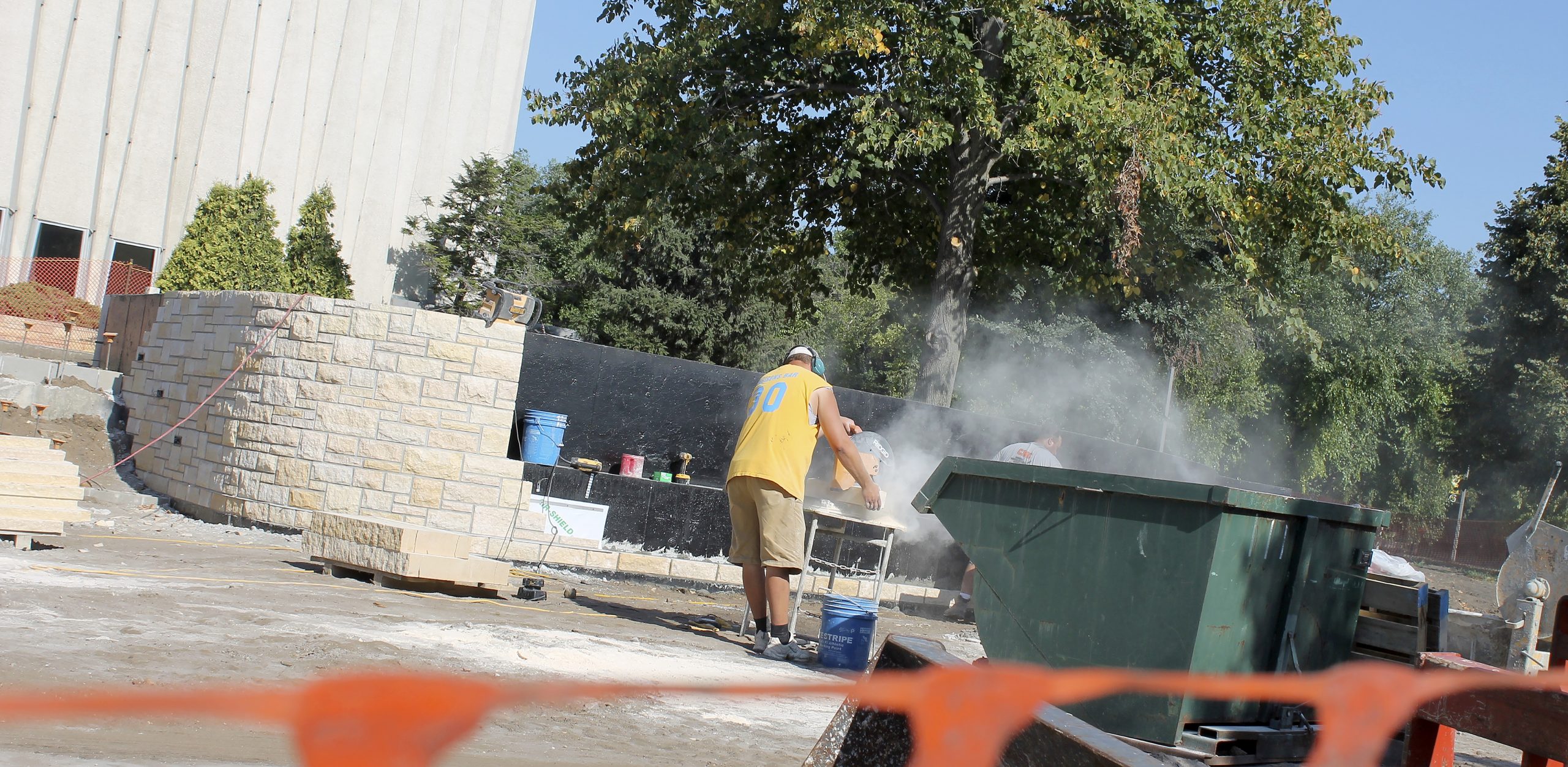A slowly growing national trend is moving across colleges and universities to fit their campuses with final resting places for college faculty, employees, and alumni. Gustavus is currently finishing the construction on a Memorial Garden of its own.
The Christ Chapel Memorial Garden, currently under construction on the south side of Chapel on Hello Walk, will be dedicated as part of the Alumni Memorial Service over Homecoming weekend at the end of September.
The Memorial Garden is comprised of one large columbarium, and incorporates the existing Lunar Moth Matrix, built by late sculptor and artist in residence Paul Granlund. The sculpture represents themes of resurrection and renewal.
The columbarium is a stone structure with niches in which ashes from a deceased person will be inurned. The columbarium is being built of concrete and native Kasota stone. It has the capacity to hold 300-400 niches, with the option of a single or double inurnment. Gustavus employees and students, as well as immediate family members will now have the option to reserve niches.
The construction of the Memorial Garden may come as an unexpected and sudden surprise to students, as plans for its current construction began last spring. Plans conceptualizing the garden, however, trace back decades.
Barb Larson Taylor ‘93, Assistant to the President for Special Projects, referenced a few reasons for the welcome implementation of the Memorial Garden on campus.
“The idea of a columbarium on campus has been discussed for decades, including by long-time Chaplain Richard Elvee. Historically, many people would have connection to a church or a city and this serves as a logical final resting place. With a society that is much more transient, many alumni feel the strongest connection and sense of “home” on the campus of their college,” Larson Taylor said.
Larson Taylor discussed that the nationwide trend of colleges installing columbaria comes from a desire of alumni and employees to stay connected with their colleges, but also from an increase in cremation rates as the Cremation Association of North America (CANA) states that the cremation rate has nearly doubled in the past decade, and CANA projects that figure will grow significantly in coming years.
Physical Plant Director Warren Wunderlich also commented on how the cultural implications of a more transient society affect Gustavus students on campus.
“More and more colleges are including these in their campus as ways to keep people connected to their colleges. People move around a lot more and have more spread-out connections. [They maintain] stronger connections to their colleges. They meet [lifelong friends] and their spouse there,” Wunderlich said.
Wunderlich addressed possible reactions that the columbarium may garner from students by discussing his own change in opinion.
“I came around to the idea with the [passing of close ones] two years ago. It got me thinking of how less connected we are to death. I think it’s a good idea for young people to remember that death is a part of life,” Wunderlich said.
Funding for the project comes from a generous donation by Nancy Lindau and the Lindau family, longtime supporters of the college. The rest of the construction will be paid for by niche sales.
The majority of funds collected will be directed to support on-going maintenance of Christ Chapel and the Memorial Garden.
Larson Taylor believes the impact of the Memorial Garden will encourage deeper reflections on what it means to be a part of campus.
“I hope most students eventually will think that it is powerful statement about the lifelong impact Gustavus has had on former students and employees. I hope this can remind students that there are generations of Gusties that came before them and more that will come after, but there is a common bond among the Gustavus community,” Larson Taylor said.
